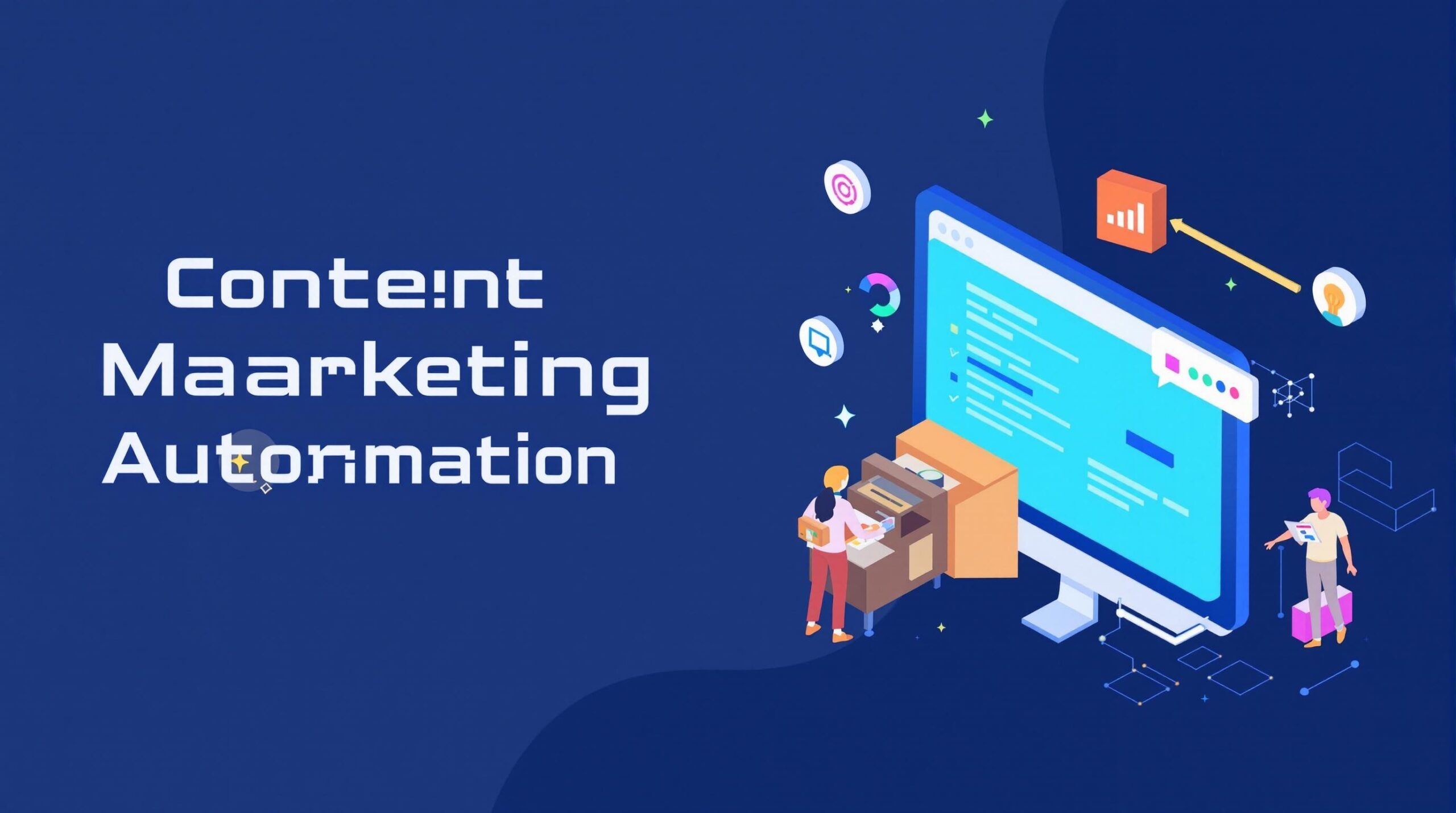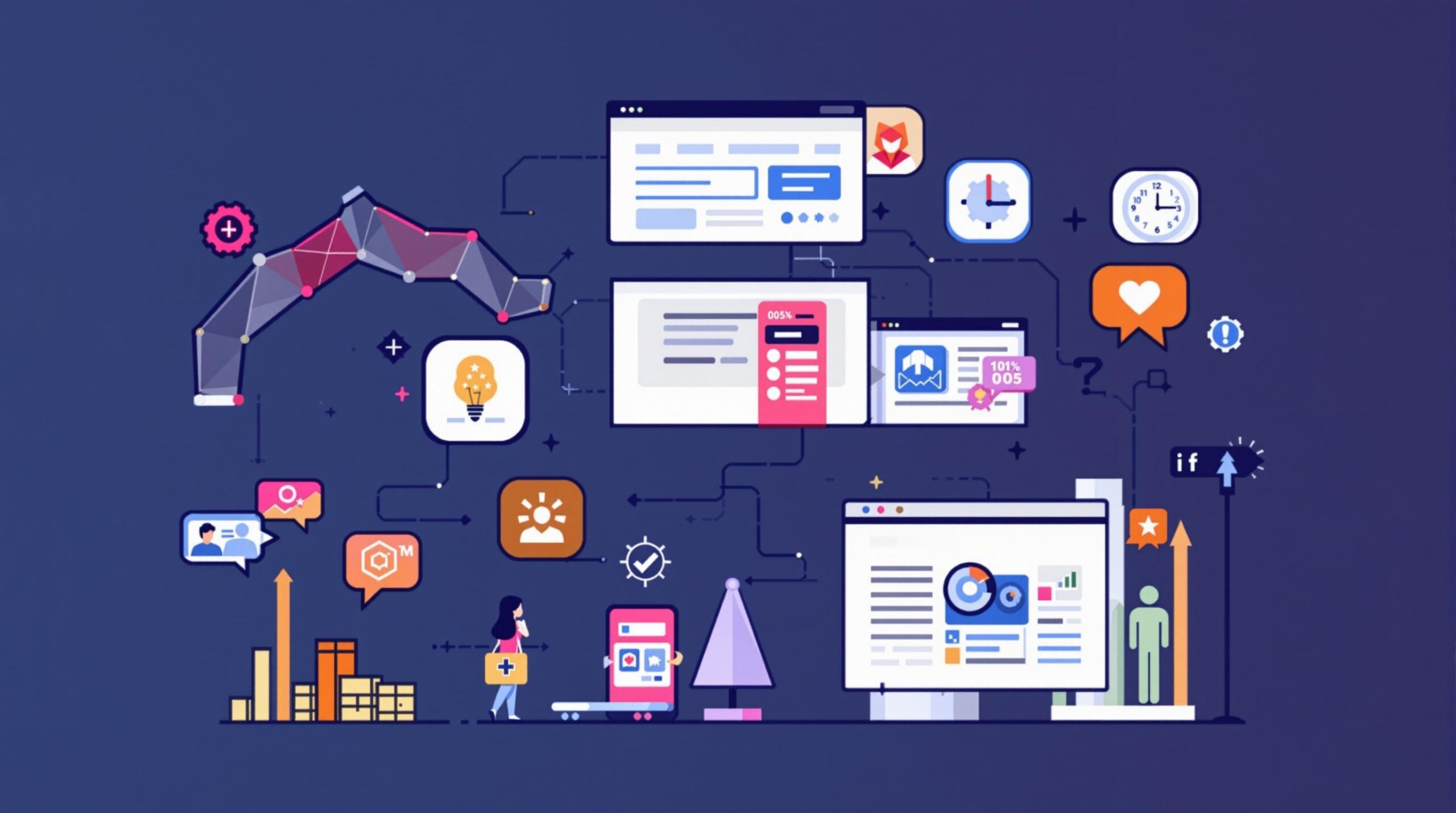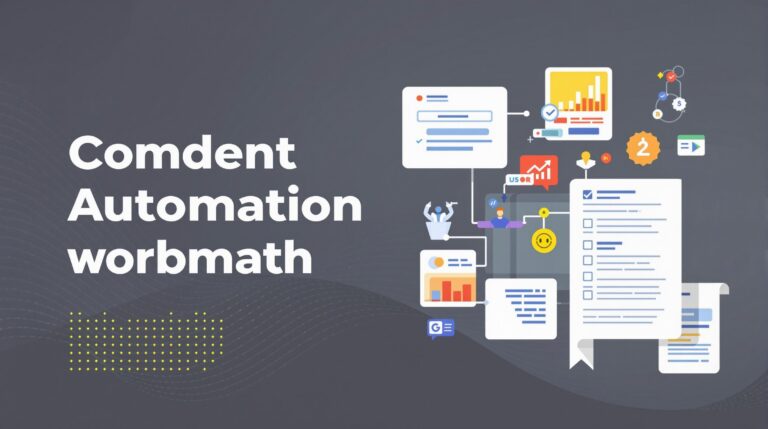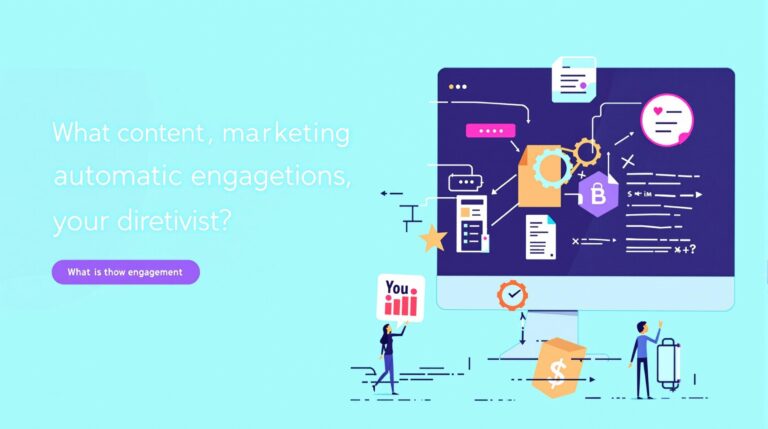The Ultimate Guide to Content Automation: Tools, Strategies, and Benefits
Content automation has revolutionized marketing by empowering businesses to create, publish, and analyze high-quality content at unprecedented speeds. The strategic implementation of content automation tools can transform scattered marketing efforts into streamlined, data-driven campaigns that consistently deliver measurable results while reducing manual workload.
Key Takeaways
- Content automation cuts creation time by up to 50% while maintaining quality
- The U.S. marketing automation market exceeds $4.62 billion as adoption accelerates
- Companies using automated workflows save 20+ hours weekly on routine content tasks
- AI content marketing tools can help businesses publish 16+ monthly blogs to generate 4.5x more leads
- Effective automation requires balancing AI efficiency with human creativity and oversight
The Content Automation Revolution
The marketing landscape has fundamentally changed with 78% of marketers now using automation for content planning and campaigns. This shift isn’t just a trend but a necessary evolution in how brands connect with audiences at scale. The explosive growth of the U.S. marketing automation market to $4.62 billion confirms what industry leaders already know: manual content processes simply can’t keep pace with today’s digital demands.
What’s driving this rapid adoption? For one, 83% of large-budget businesses rely on automation for maintaining content consistency across channels. The ability to create, schedule, and analyze content through automated systems has transformed disjointed marketing efforts into cohesive, data-driven campaigns that deliver measurable results.
I’ve observed that companies implementing content automation solutions typically see improvements across three critical areas: time savings, cost reduction, and scalability. These benefits combine to create a compelling case for automation adoption, especially as AI content tools become increasingly sophisticated.

Measurable Benefits of Content Automation
The tangible advantages of implementing content automation extend far beyond simple convenience. When properly leveraged, these tools deliver quantifiable improvements to efficiency, quality, and overall marketing performance.
Time reduction stands out as perhaps the most immediate benefit. Automation cuts content creation time by approximately 50%, with AI tools like ChatGPT capable of drafting 1,000-word blogs in just 30 minutes. This dramatic efficiency boost allows marketing teams to focus on strategic thinking rather than repetitive production tasks.
From a financial perspective, companies typically save 20+ hours weekly on content tasks through automation. These saved hours translate directly into cost savings or can be reallocated to high-value creative work that machines can’t replicate. The math is compelling – when your team spends less time on routine tasks, you can invest more in strategy and innovation.
Perhaps most importantly, automation enables true content scalability. Businesses publishing 16+ monthly blogs generate 4.5x more leads than those publishing fewer, according to research from Aventi Group. Without automated content creation systems, maintaining this volume while preserving quality would be virtually impossible for most marketing teams.
Essential Content Automation Tools for 2025
The market for automated content creation tools has matured significantly, offering specialized solutions for each phase of the content lifecycle. I’ve identified the most effective tools across three key categories: AI-powered creation, scheduling and distribution, and SEO/analytics.
In the realm of AI creation platforms, several solutions stand out:
- SEMrush Content Marketplace – Combines SEO-optimized content creation with keyword analysis and analytics integration
- Content Genius (Search Atlas) – Merges AI-generated content with human editing, leveraging advanced models like Claude and ChatGPT
- Jasper and Copy.ai – Reduce ideation time by 60% for ad copy, email sequences, and blog outlines
For scheduling and distributing your content across channels, two platforms lead the market:
- Hootsuite – Supports 140+ integrations with tools like Brandwatch and Chartbeat for cross-platform scheduling
- Buffer – Excels in IFTTT/Zapier automation for bulk social media scheduling and workflow automation
To optimize performance and track results, these tools provide comprehensive insights:
- Search Atlas Scholar – Provides 0-100 scoring based on content freshness, factuality, and user intent alignment
- HubSpot CMS – Tracks engagement, conversions, and ROI through unified dashboards that connect content to business outcomes
When selecting AI content marketing tools, consider your specific workflow challenges and integration requirements. Many teams find that combining specialized tools creates a more effective automation stack than relying on a single all-in-one solution.
Step-by-Step Content Automation Strategies
Implementing effective content automation requires a systematic approach that balances efficiency with quality. I recommend breaking down your automation strategy into four distinct phases: creation, scheduling, distribution, and analysis.
For content creation automation, start by establishing templates and frameworks that maintain brand consistency. Tools like Canva help ensure visual elements remain consistent across blogs, emails, and social posts. Next, implement repurposing workflows that can transform a single piece of content into multiple assets – for example, converting one comprehensive blog post into 3-5 derivative pieces for different channels.
The scheduling phase becomes remarkably efficient with the right tools. Buffer users report being able to schedule an entire month of social posts in just two hours through batch scheduling. For blog content, implement trigger-based publishing to automatically release content at peak engagement times (typically 10 AM on weekdays for many B2B audiences).
Distribution automation should focus on personalization at scale. Consider these proven techniques:
- Segment email lists using HubSpot to deliver tailored blog recommendations, boosting open rates by 25%
- Implement dynamic content blocks that change based on user behavior or demographics
- Use automated A/B testing for headlines to increase click-through rates by 15-20%
Finally, performance tracking automation ensures you can quickly identify what’s working and what isn’t. Google Analytics can be configured to generate automated reports highlighting top-performing content, while tools like SEMrush’s Keyword Magic Tool identify 3x more long-tail keywords than manual research could uncover.
Content Performance Tracking and Optimization
The ability to automatically track, analyze, and optimize content performance represents one of the most powerful applications of automation technology. Without systematic tracking, even the most creative content strategy amounts to little more than guesswork.
Google Analytics remains the foundation of most content tracking systems, monitoring traffic sources and user behavior with automated reports that highlight top-performing blogs. These insights can trigger automatic adjustments to promotion strategies, focusing resources on content that resonates with audiences.
A/B testing automation takes optimization to the next level. By systematically testing headline variations, featured images, and call-to-action placements, these systems can increase click-through rates by 15-20% without requiring ongoing manual intervention.
For SEO optimization, tools like SEMrush’s Keyword Magic Tool identify three times more long-tail keywords than manual research methods. This expanded keyword universe allows for more comprehensive content planning and better alignment with actual search behavior.
The HubSpot CMS provides perhaps the most integrated approach to performance tracking, connecting content metrics directly to business outcomes through unified dashboards. This integration enables marketing teams to demonstrate concrete ROI from content investments – a crucial capability for securing continued resources.
Real-World Success Stories
The theoretical benefits of content automation are compelling, but real-world results provide the most convincing evidence of its value. These case studies illustrate how diverse organizations have transformed their content operations through strategic automation.
Media Monk, a digital marketing agency, achieved 60% higher search traffic by implementing AI for SEO-optimized blog content. Their automated approach resulted in content ranking #1 for twelve competitive keywords within six months, according to their published case study. The key to their success was combining AI-generated drafts with human editing that preserved brand voice while maintaining SEO best practices.
An unnamed B2B SaaS company (featured in Wolfpack Advising’s research) reduced content costs by 35% while simultaneously doubling output by implementing SEMrush and ChatGPT workflows. Their process involved using AI for research and first drafts, then having subject matter experts refine the material. This hybrid approach maintained thought leadership quality while dramatically increasing production capacity.
In comparing automation platforms, research from LinkHumans found that Hootsuite outperforms Buffer in analytics depth and enterprise features, while Buffer offers superior third-party automation through Zapier integrations. This highlights the importance of selecting tools based on specific organizational needs rather than overall market popularity.
Future Trends in Content Automation
The evolution of content automation continues to accelerate, with several emerging trends poised to reshape marketing practices in the coming years. Understanding these developments is essential for staying ahead of the curve and maximizing the potential of your automation investments.
Hyper-personalization represents perhaps the most transformative trend. Advanced AI systems can now predict user intent to generate preemptive content tailored to individual needs and preferences. For example, automated systems can identify when a prospect is researching a specific topic and trigger personalized webinar invitations or custom resource guides addressing their particular interests.
Multilingual automation is breaking down geographic barriers to content distribution. Tools like Acrolinx can now automatically translate and localize content into 50+ languages while preserving brand tone and technical accuracy. This capability enables global content strategies that would be prohibitively expensive using traditional translation services.
The integration of augmented and virtual reality into automated content systems opens new dimensions for engagement. Brands like IKEA are using AI to create immersive product visualizations that boost engagement by 40%. As these technologies become more accessible, we’ll see increasing automation of interactive content experiences that blur the line between marketing and utility.
Getting Started with Content Automation
Implementing content automation doesn’t require an immediate overhaul of your entire marketing infrastructure. A phased, strategic approach often yields better results than attempting comprehensive transformation all at once.
Begin with a thorough content audit to identify which parts of your workflow are most time-consuming or error-prone. This assessment provides a data-driven foundation for prioritizing your automation investments. Pay particular attention to repetitive tasks that don’t require substantial creative input – these typically offer the quickest returns on automation.
Start small by implementing one automation tool that addresses your biggest pain point. This focused approach allows your team to develop comfort with automation concepts while delivering immediate benefits. Many organizations begin with either scheduling automation (using tools like Buffer) or editing assistance (with platforms like Grammarly) before moving to more advanced applications.
Carefully measure both time saved and quality improvements before expanding your automation stack. This measurement discipline ensures you can demonstrate concrete ROI from each implementation phase, building organizational support for further investments.
Remember that human oversight remains essential for strategy development, emotional connection, and brand voice consistency. The most successful automation implementations enhance human creativity rather than attempting to replace it. Finding this balance is critical to avoiding the generic, algorithm-driven content that sophisticated audiences increasingly recognize and reject.








